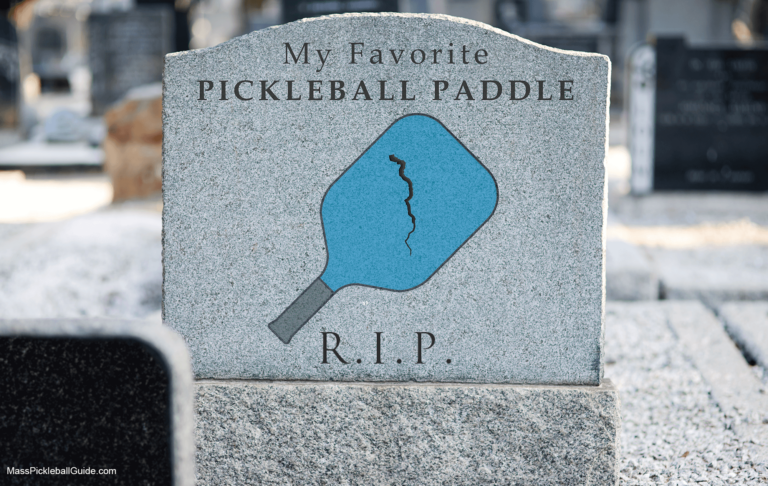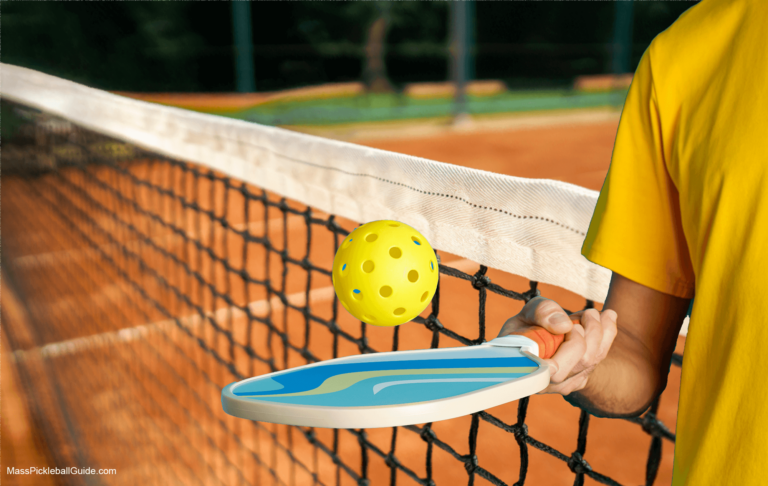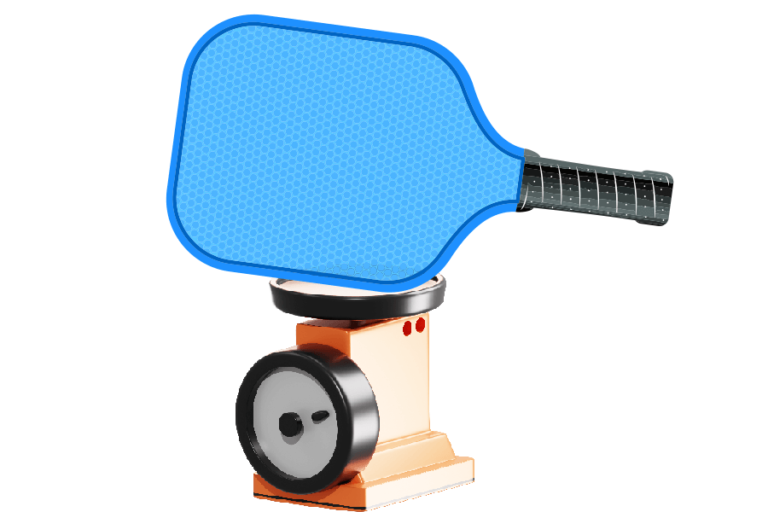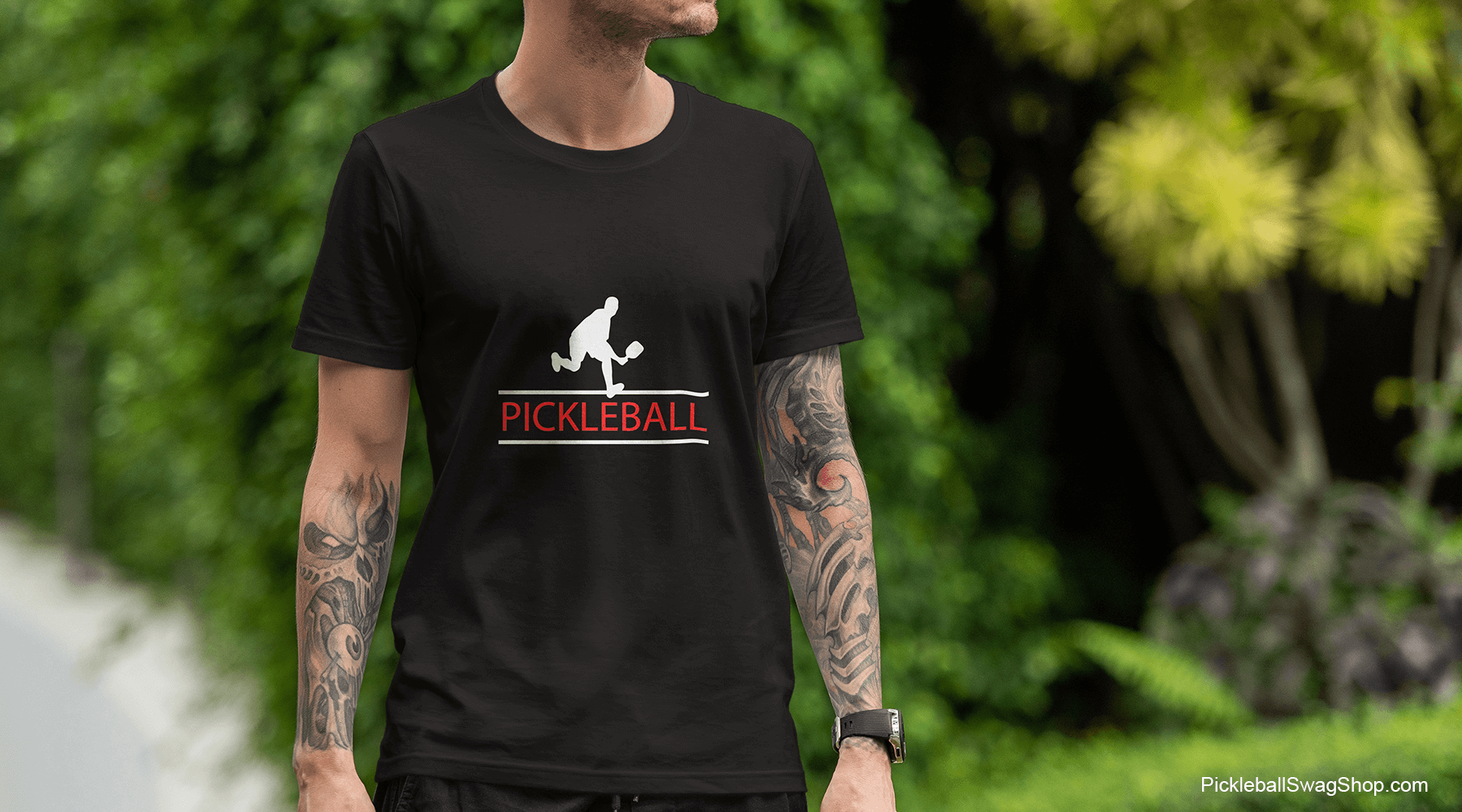The Ultimate Guide to Pickleball Paddle Cores
matter does matter
Understanding the Core Materials of Pickleball Paddles and Their Significance
The core of a pickleball paddle is distinct from its face, both in terms of material and function. Though not visible to the naked eye, the pickleball paddle core plays a key role in the paddle’s performance. While this article is centered on core materials, it’s essential to note that the core’s thickness is equally vital for the player’s experience.
Most pickleball paddle cores adopt a honeycomb structure, with empty cells aimed at enhancing the paddle’s strength without adding extra weight. Several materials can be used to make the core, with polymer, aluminum, and Nomex being among the most prevalent.
Polymer Cores in Pickleball Paddles: A Brief Overview

Polymer cores (aka polypropylene, poly core, or simply poly) are the most common core materials in pickleball paddles. Their popularity stems from the balanced touch and power they offer, quieter gameplay, and notable durability. While these cores exhibit general characteristics, variations exist between manufacturers, mainly concerning the size and number of honeycomb cells, which dictate the paddle’s density, power, and durability.
Pros:
- Balanced Performance: Provides a good balance of touch and power.
- Noise Control: Tends to be a little quieter, depending on the force of the hit (see quiet pickleball paddles: the solution to noise problems).
- Durability: Has high durability, with some variants even being recyclable.
- Strength & Flexibility: Offers a combination of strength and flexibility.
Cons:
- Variability in Manufacturing: Differences in cell size and number among manufacturers can lead to inconsistent playing experiences. Get from a reputable dealer.
- Density & Durability Trade-off: Paddles with larger cells provide more control but are less durable, while those with smaller cells are more powerful but may compromise touch sensitivity. Larger cells can develop dead spots faster due to reduced material usage.
See also: The importance of forgiveness in a pickleball paddle: exploring sweet spots
Nomex Cores in Pickleball Paddles: An Overview
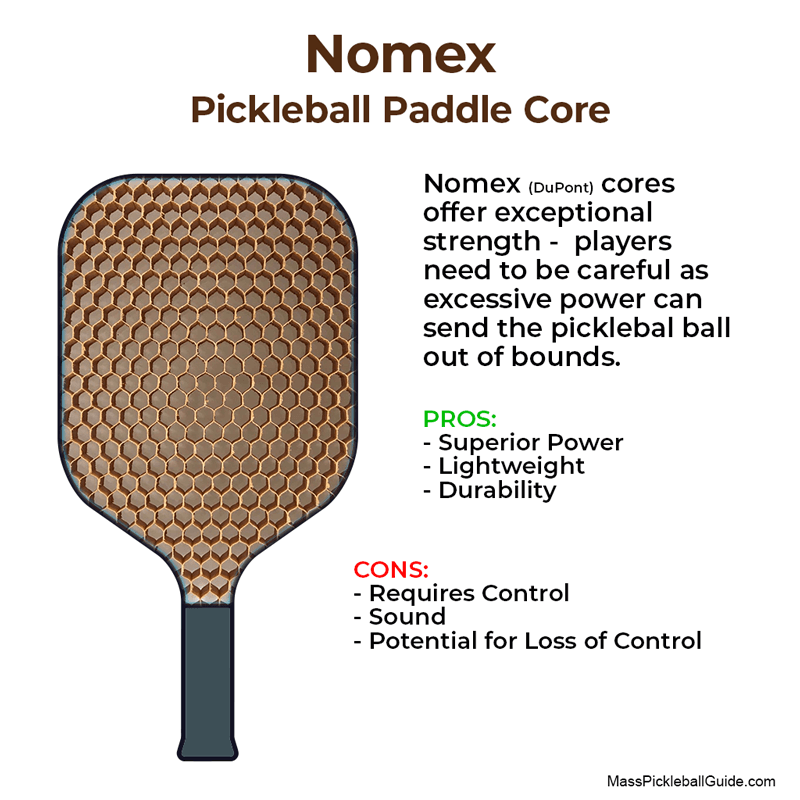
Nomex cores (product of DuPont), have a longstanding history in pickleball paddles. These cores stand out for their unmatched power. With a honeycomb structure composed of small cells, these are actually polymer-based. Although they offer exceptional strength, players need to be cautious as excessive power can send the pickleball out of bounds. Mastery in control, precision, and other paddle adjustments can tame this power.
Pros:
- Superior Power: Nomex cores deliver an incredible amount of strength in shots.
- Lightweight: Despite their power, these paddles are surprisingly light, making swings easier even for beginners.
- Durability: Being flame-resistant and heat-resistant, they promise longevity.
Cons:
- Requires Control: Their power can easily lead to faults if not managed correctly.
- Sound: Every shot is quite audible, making for a noisier game.
- Potential for Loss of Control: Quick volleys can become challenging to manage, even for seasoned players.
Aluminum Cores in Pickleball Paddles: An Insight
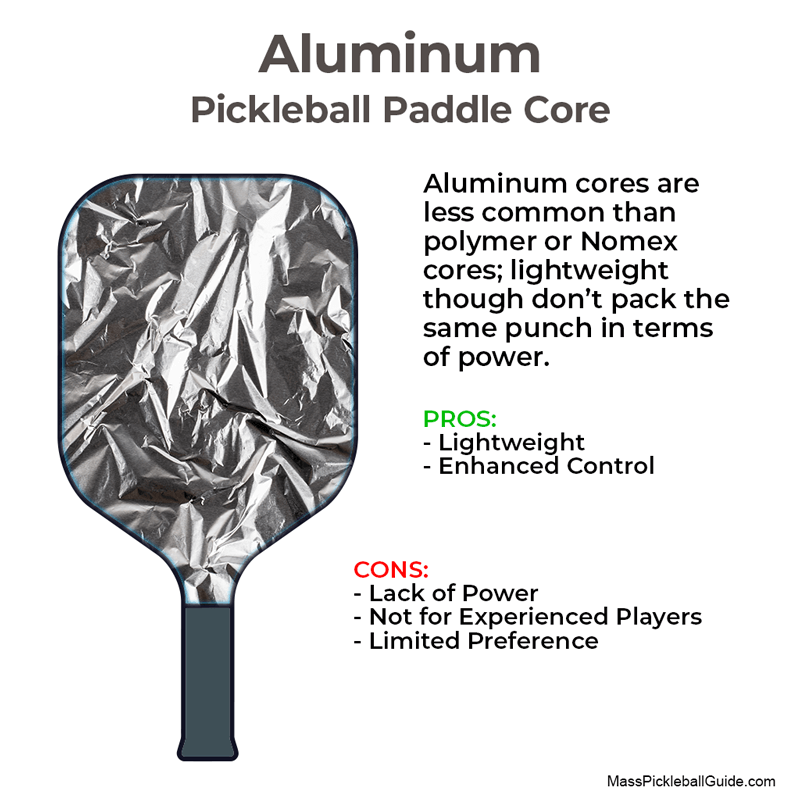
Aluminum cores are less frequently chosen compared to polymer or Nomex cores. Though lightweight, they don’t pack the same punch in terms of power. While beginners might not be able to notice the difference, more experienced players will notice the subdued power. Despite all that, aluminum cores provide better control over the ball, which could be advantageous for those prone to hitting out of bounds, though there might be better alternatives for enhanced control.
Pros:
- Lightweight: Aluminum cores are easy to maneuver due to their reduced weight.
- Enhanced Control: Offers more precision compared to more powerful paddle cores.
Cons:
- Lack of Power: Doesn’t deliver the same level of strength in shots as other cores.
- Not Ideal for Experienced Players: Veterans in the game might find aluminum cores underwhelming.
- Limited Preference: It might not be the top choice for those seeking optimal control.
Summary and Recommendation on Pickleball Paddle Cores:
Polymer Cores:
- Well-rounded with a balance of touch and power.
- Quieter gameplay.
- Durable with some variants being recyclable.
Nomex Cores:
- Deliver exceptional power but can be hard to control.
- Lightweight and durable.
- Produce a louder sound during gameplay.
Aluminum Cores:
- Lightweight and easy to maneuver.
- Enhanced control but lack significant power.
- Might not be the top choice for experienced players.
Our Suggestion
You must be wondering… so what’s the point of all this?
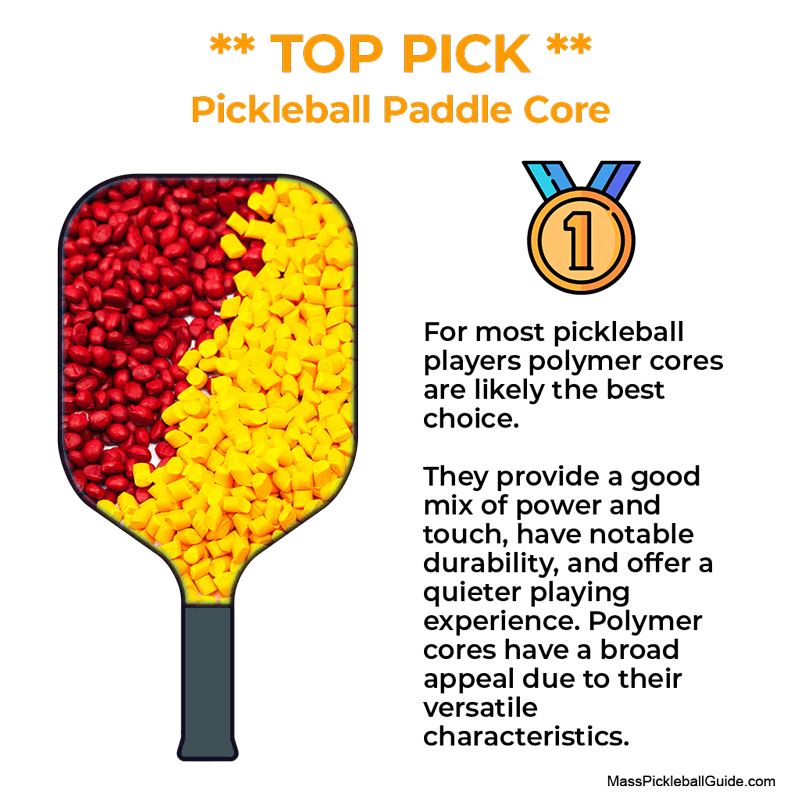
For a majority of players, especially those looking for a balanced playing experience, polymer cores are likely the best choice. They provide a harmonious mix of power and touch, have notable durability, and offer a quieter playing experience. Experienced players seeking power might lean towards Nomex, while those prioritizing control might consider aluminum. However, as our overall recommendation, polymer cores have a broad appeal due to their versatile characteristics.
One more detail: there is a difference between men’s and women’s pickleball paddles and you should at least know the basics before you plunk down $100 for a paddle.
Beginner Picklers Choice of Core for Paddle Core
For beginners, a polymer core is often recommended. Here’s why:
- Balanced Play: Polymer cores offer a good balance between touch and power, allowing beginners to develop a rounded skill set.
- Durability: They tend to be durable, which is beneficial as beginners might not yet have the techniques down and could subject the paddle to more wear and tear.
- Quieter Gameplay: The quieter nature of polymer cores might be less intimidating for new players and more acceptable in shared or residential playing environments.
- Control: While they do offer some degree of power, polymer cores generally provide more control than a Nomex core, which is crucial for beginners as they are still developing their accuracy and shot placement.
- Cost: Polymer paddles are often more affordable than some of the high-end Nomex or aluminum paddles, making them a cost-effective choice for those just starting out and not wanting to invest heavily.
In summary, while experienced players might look for specific characteristics to suit their playstyle, beginners benefit from a more versatile and forgiving paddle, which polymer cores typically provide.
More Advanced Player’s Choice of Paddle Core
For more advanced pickleball players, the best core often depends on their specific playing style and what they prioritize (e.g., power, control, quick reflex volleys). However, Nomex cores are often favored by many advanced players, and here’s why:
- Superior Power: Nomex cores deliver a high degree of power, which can be harnessed effectively by advanced players for aggressive shots.
- Responsive Feel: The rigidity of Nomex allows for a responsive feel during play, which experienced players might appreciate for quick volleys and fast-paced exchanges.
- Durability: Nomex cores are robust and durable, suitable for the rigorous gameplay of advanced players.
- Lightweight: Despite their power, Nomex paddles are usually lightweight, enabling swift movements and quick reactions.
While Nomex is a popular choice for its power and responsiveness, advanced players should consider their playing style and preferences when selecting a core. It’s also beneficial for advanced players to try out different paddles to find the perfect fit for their game.
Conclusion
Yes, there’s a conclusion to all this! The core of a paddle, often overshadowed by its face, plays a pivotal role in determining a player’s experience on the court. Whether you’re a beginner seeking a forgiving and balanced play or an advanced player chasing power and precision, understanding the nuances of core materials is very important. From the versatile polymer to the powerful Nomex and the lightweight aluminum, each core brings its unique characteristics to the table.

